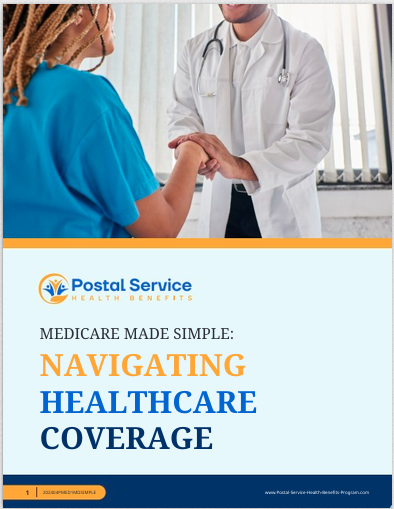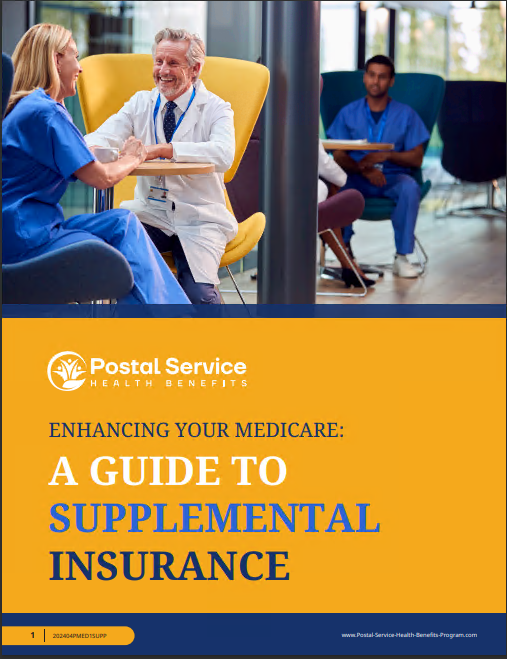Key Takeaways:
- PSHB will significantly alter the health benefits landscape for USPS annuitants starting in 2025, impacting coverage options and eligibility requirements.
- Annuitants need to stay informed about these changes to make timely decisions regarding their healthcare benefits and coverage.
How PSHB Will Change Health Benefits for USPS Annuitants in 2025
In 2025, a significant shift in health benefits for United States Postal Service (USPS) annuitants will take place, driven by the Postal Service Health Benefits (PSHB) program. As part of the Postal Service Reform Act of 2022, the PSHB program will introduce new health benefit plans for USPS employees and retirees. These changes are designed to address long-standing financial concerns within the USPS, streamline health benefit options, and align postal workers’ benefits more closely with those offered by the Federal Employees Health Benefits (FEHB) program. Understanding how these changes will impact current and future annuitants is crucial for ensuring continued healthcare coverage and financial stability.
Overview of the PSHB Program
The PSHB program, effective January 1, 2025, will require most USPS employees and retirees to enroll in a PSHB plan. This new program will operate separately from the existing FEHB program, although it will remain under the broader FEHB umbrella. The transition to PSHB is a result of the Postal Service Reform Act, which was signed into law on April 6, 2022, aiming to reduce the USPS’s financial burdens by addressing retiree health benefit liabilities.
One of the most significant changes with the PSHB program is the requirement for Medicare-eligible annuitants and their eligible family members to enroll in Medicare Part B to maintain their PSHB coverage. This requirement represents a major shift from previous policies where enrollment in Medicare Part B was optional but recommended. Annuitants who are not yet eligible for Medicare will continue to receive their health benefits through the PSHB program without this requirement until they become Medicare-eligible.
Changes in Health Benefits for Annuitants
For USPS annuitants, the transition to the PSHB program will bring several changes, particularly for those nearing Medicare eligibility. Here are some key aspects that annuitants should be aware of:
- Mandatory Medicare Part B Enrollment: Starting in 2025, annuitants who are 65 or older and Medicare-eligible must enroll in Medicare Part B to retain their PSHB coverage. This mandatory enrollment could impact annuitants financially, as they will need to pay Medicare Part B premiums in addition to any PSHB premiums. Annuitants who choose not to enroll in Medicare Part B could lose their PSHB coverage, making this a critical decision point.
- New Plan Offerings: The PSHB program will offer new health plans specifically designed for postal employees and retirees. These plans will provide similar benefits to those currently offered under the FEHB program but tailored to meet the unique needs of the USPS workforce. Annuitants will need to carefully review these new plan options during open season to select the plan that best meets their healthcare needs and financial situation.
- Continued FEHB Coverage: For those who are not yet Medicare-eligible, PSHB will provide continued health coverage similar to what they have received under the FEHB program. However, once they become Medicare-eligible, the transition to PSHB plans that require Medicare Part B enrollment will be necessary. This ensures that retirees maintain comprehensive health coverage while reducing the overall cost burden on the USPS.
- Impact on Family Members: The changes will also affect family members who are covered under an annuitant’s plan. Eligible family members who are Medicare-eligible must also enroll in Medicare Part B to retain PSHB coverage. Annuitants will need to ensure that their dependents meet these requirements to avoid any disruption in coverage.
Preparing for the Transition
As the 2025 implementation date approaches, it is essential for USPS annuitants to prepare for the transition to the PSHB program. Here are some steps annuitants can take to ensure a smooth transition:
- Review Current Coverage: Annuitants should begin by reviewing their current health coverage under the FEHB program. Understanding the benefits and costs associated with their current plan will help them make informed decisions when comparing new PSHB options.
- Understand Medicare Part B Enrollment: Since enrolling in Medicare Part B will be mandatory for most annuitants to maintain PSHB coverage, it is crucial to understand how this enrollment works, the associated costs, and the benefits of Medicare Part B. Annuitants who have delayed enrolling in Medicare Part B may face late enrollment penalties, which should be factored into their decision-making process.
- Explore PSHB Plan Options: Once the new PSHB plans are released, annuitants should carefully review the available options. Comparing these plans to their current FEHB coverage and considering the impact of Medicare Part B enrollment will be essential in selecting the most appropriate coverage.
- Consult with Licensed Insurance Agents: Given the complexity of the upcoming changes, annuitants may benefit from consulting with licensed insurance agents who can provide guidance on the best options for their specific situation. These professionals can help navigate the transition, ensuring that annuitants maintain comprehensive and affordable health coverage.
- Prepare Financially for Changes: The introduction of mandatory Medicare Part B enrollment may result in additional costs for annuitants. Planning for these expenses in advance, including budgeting for Medicare Part B premiums, will be important to avoid any financial strain. Annuitants should also consider how these costs will affect their overall retirement budget.
Important Dates and Deadlines
Understanding the key dates and deadlines associated with the transition to the PSHB program is vital for USPS annuitants:
- April 6, 2022: The Postal Service Reform Act was signed into law, initiating the changes that will lead to the establishment of the PSHB program.
- Open Season 2024: This will be the first opportunity for annuitants to enroll in a PSHB plan. During this period, annuitants must compare their options and make selections that will take effect on January 1, 2025.
- January 1, 2025: The official start date for the PSHB program. Annuitants who are Medicare-eligible must be enrolled in Medicare Part B by this date to retain their health coverage through PSHB.
What Happens if You Don’t Enroll?
Failing to enroll in Medicare Part B when required could have serious consequences for USPS annuitants. Without Part B enrollment, annuitants may lose their PSHB coverage, leaving them without comprehensive health insurance. This could result in significant out-of-pocket expenses for medical care, as they would need to seek alternative coverage options, likely at a higher cost and with less comprehensive benefits.
Additionally, not enrolling in Medicare Part B when first eligible may lead to late enrollment penalties. These penalties can increase the cost of Part B premiums permanently, making it even more critical for annuitants to adhere to the enrollment timelines.
Potential Impacts on Future Retirees
The PSHB program will not only affect current USPS annuitants but also future retirees. Employees who plan to retire after 2025 will need to consider how the new health benefits landscape will impact their retirement planning. The mandatory Medicare Part B enrollment could alter the way future retirees approach healthcare in retirement, potentially influencing their decisions about when to retire and how to manage their post-retirement healthcare costs.
For those planning to retire within the next few years, staying informed about these changes and planning accordingly will be essential. This includes understanding how their health benefits will transition from FEHB to PSHB and preparing for the associated costs of Medicare Part B.
Staying Informed and Taking Action
The transition to the PSHB program represents a significant change in the way USPS annuitants will receive their health benefits. To ensure a smooth transition, annuitants must stay informed about the latest developments, carefully review their options during open season, and take proactive steps to enroll in the necessary programs. By doing so, they can maintain comprehensive healthcare coverage and avoid any potential disruptions or financial penalties.
Key Considerations for Annuitants
In summary, the upcoming changes to USPS health benefits through the PSHB program will require careful planning and attention from annuitants. Understanding the new requirements, particularly the mandatory Medicare Part B enrollment, will be crucial for maintaining health coverage and managing costs in retirement. By staying informed and taking timely action, USPS annuitants can navigate these changes successfully and secure their healthcare needs for the future.
Contact Information:
Email: [email protected]
Phone: 6235552345







